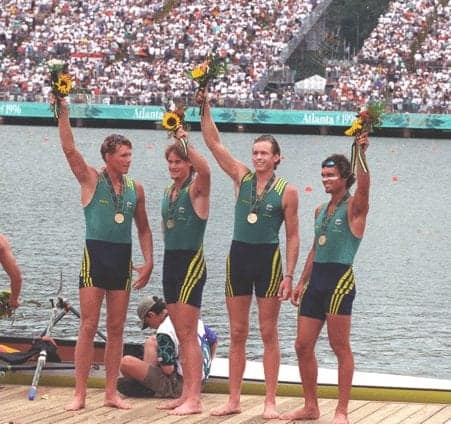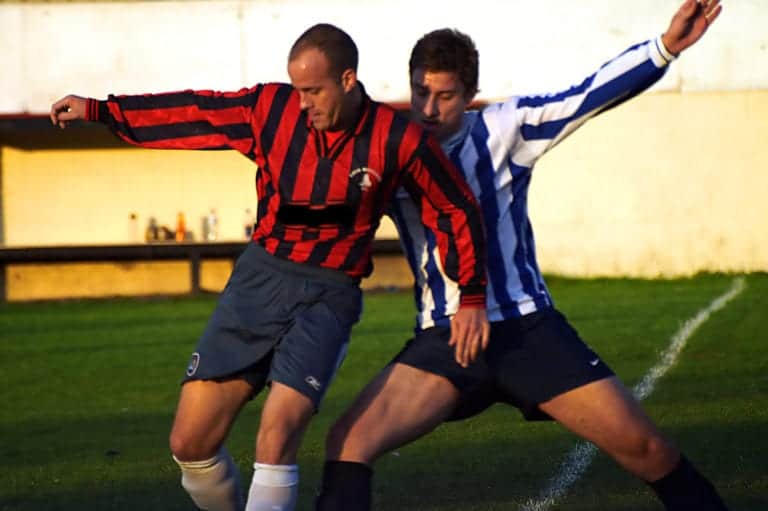As a coach, nothing is more demoralizing than a losing streak that just won’t break. While we do our absolute best to avoid losing streaks, performance slumps, or even the prospect of our team underachieving it doesn’t mean we can avoid the topic, it’s too important.
Luckily history tells us that almost all losing streaks are broken eventually, the real issue we’re interested in is how? If your team is in a slump, what is the best way to turn it around? How do you break a losing streak?
I was recently at a conference where this very question was asked. There was a lot of discussion, but few of even the most experienced coaches had reliable strategies to deal with it. This demonstrates to me why we should address this very issue, so if you’re ever confronted with one you can handle it well.
At Athlete Assessments, we have worked with professional and collegiate teams across the globe. We have been fortunate in that this has given us a unique insight into hundreds of programs, and the issues they face – including losing streaks. Our solutions are based on all of this experience.
Below is a brief checklist we've created that can be applied to all sports when results just aren't going your way. In the following videos and text, we cover these key areas:
- The first step in breaking a losing streak is understanding what isn't working and looking at ways to improve.
- To be able to do this step, you need self-awareness of the key elements of your program, and how each is performing.
- Game day is the outcome. But what comes before? What are the symptoms that are causing the losing streak?
- Go back to your pre-season framework (we use the GRIP Model). Often when problems occur during the season it's because key elements or behavioral standards have dropped. High performance and team development is not an event, it's an ongoing process.
- Accountability is critical in ensuring these behavioral standards are being met and that everyone is living up to the team identity you've committed to.
- Lastly, does your team actually believe they can win? Our solution for addressing this is building evidence, and examples are included below.
Do you actually know your team’s recipe for success?
Often the worst part of being on a losing run is not being able to pinpoint exactly what is going wrong. A tell-tale sign of a team that can’t break a losing drought is moving their focus away from the things they can control and onto things they can’t, like officials’ decisions, equipment malfunctioning, transport delays and many more. The reality is, as we have always said at Athlete Assessments, self-awareness is a vital component for long-term success in sport. You need to do a thorough assessment of each component of your program and what areas are falling short.
The first step in breaking a losing streak is understanding what isn’t working and looking at ways to improve.
What happens on game day is often not the cause of the losing streak. Often it is something that’s happened in the pre-season, it’s festered and now it’s costing you.
So revisit the framework that you set up at the beginning of the season. We use the GRIP Model, which ensures you manage your goals, roles, interpersonal relationships, processes and procedures. GRIP allows you to set the behavioral standards for the year ahead, and clearly explain what is expected both on and off the field. I guarantee that if a team is not performing well, it’s because those behavioral standards have slipped.
If you, other members of your coaching staff and your athletes can very easily articulate the elements of your program that contribute to your overall goals, chances are you will have a higher number in the W column than L column. It also makes it a lot easier to identify what standards may be slipping when the results don’t go your way instead of finding scapegoats in elements beyond your control. The key here is to ensure all members of your program, including yourself are aware of what is expected of them both technically and non-technically in order to achieve what you want on the scoreboard.
Of course, sometimes you can have all of the elements in place and be beaten by a better team on the day – that is the beauty of sport. Only when losing becomes the norm should you consider restructuring aspects of your program. You can’t do the same thing over and over again and expect different results – if you’re in a long-term losing streak, don’t expect your current practices to help your results.
You have to consistently assess what is and isn’t working for the program. You should think of high performance not as an event that occurs but a process that is tinkered with until the right formula is found.
Are members of your team being held accountable for their actions?
If your team is aware of the values and behaviors underpinning the collective goals the program has, but are falling short in some areas, then it’s time to have some honest, one-on-one conversations with the athletes involved. It’s also important to note here that this doesn’t just go for technical areas of your sport. I will guarantee that you’re not just losing on game day. Changing technique or teaching new plays is the easy part of coaching when compared to the challenges of understanding, motivating and keeping you athletes on track.
The scoreboard will directly reflect the degree to which each of your athletes are living up to the values and behaviors expected of them consistently since the start of the season.
It’s what makes high performance uncommon. It’s tough. It’s difficult to aspire to the highest levels of standards and behavior on a daily basis. A lot of teams fall short in that area. The ones that do live up to their standards are highly successful both in sport and outside of it. It’s the teams that hold themselves and each other accountable for those behavioral standards that are more likely to experience sustained success.
The second element to addressing the accountability of your athletes’ values and behaviors is understanding the identity your team wishes to have. It is important to stress to the individuals you suspect of falling short in their behavioral standards that each and every action they do forms a representation of the program’s identity. Some teams don’t see themselves as a championship team, even when they start the season well, because their identity is not that of a winning team, they find a way to create their own losing streak because of this belief.
This has to change. It’s about creating pride in the program. Assuming you have set out from the start of the season the particular identity you want the team to embody, then it is imperative you consistently apply this. The advantage of focusing on the team identity is that even when you have one-on-one conversations with your athletes, it will lower the risk of the athlete feeling like they are being personally attacked.
(For an example of how to have a conversation with an athlete not living up to the standards of the team, watch our video on the STATE My Path method.)
Does your team actually believe they’ll break the losing streak?
Perhaps the most difficult aspect to address is the belief within the team. Quite an easy way to gauge what the consensus of the team is, is to openly ask the group: “Do you think we will win on game day?” A successful team will give a resounding ‘yes’, whereas teams with little belief will be far less enthusiastic. It’s worth exploring what beliefs can do for your team and what to do when belief is low.
In the sporting context, beliefs can be pretty dichotomous. That is, if self-belief is high, you’re likely to experience success and when it’s low, it’s amazing how athletes find a way to fulfill their low expectations. Logically as a coach we want to keep the self-belief of the team at a level that will generate their best performances. But how do you maintain the team’s self-belief when losing becomes the norm?
The key here is that beliefs are based on evidence. If this topic is relevant to you, I highly recommend our video and article on Self-belief: a coach’s guide to solving athlete confidence for good. The strategy I use to combat negative beliefs festering among a team is to create evidence that replaces the negative with positive. I’ll share two examples on how to go about this:
When working with a Division 1 Collegiate team, I noticed that the student-athletes felt as though they should have been achieving far better results than they were at that point in time. Their team consisted of All-American representatives and multiple conference-award winning student-athletes, yet they were struggling to beat teams ranked far below them. The interesting thing about this team was that the individual athletes’ self belief was a lot lower than the belief they had in the team – they knew and believed they had a great team, but individually they struggled with self-belief. So what was the solution?
In one particular session I addressed this issue by asking all members of the group to give one reason as to why they believe in the person we were talking about at that moment. We went around the group so that everyone realized the belief that their team members had in them. I wanted everyone to see that if others believed in their abilities and valued them as part of the team, why couldn’t they believe in themselves?
The second example I’ll use here is one from my rowing days. At my first Olympics, the 1992 Olympics in Barcelona, we were racing against two exceptional teams from Germany and Canada. The German Eight were reigning Olympic and World Champions over the previous four years, and the Canadians had never beaten them.
However at some point between the World Championships and the Barcelona Olympics, the Canadians had had enough and wanted to change the German’s long run of race wins. During their training for Barcelona the Canadians used various physical parameters to prove to themselves that they could in fact post better times than the German Eight. The Canadians believed that they could beat the Germans and they had the evidence from training to prove it. With this new-found self-belief, the Canadian Eight finally did beat the Germans in the Olympic Final in 1992 to win a gold medal.
The two examples above illustrate the role of a coach during times of poor performance. You have to be able to point out the reason why the people in your playing group should believe in themselves and the success of the team.
Breaking a losing streak is hard. Often it is the non-technical rather than the technical elements of your program holding your team back, and these can be difficult to navigate as a coach. But if you are coaching at the highest level, the reality is that it is the non-technical is what you will spend the majority of your time on.
It is managing culture, leadership, interpersonal relationships, conflict and communication. Here’s a recap of what we’ve covered in this article:
- The first step in breaking a losing streak is understanding what isn’t working and looking at ways to improve.
- To be able to do this step, you need self-awareness of the key elements of your program, and how each is performing.
- Game day is the outcome. But what comes before? What are the symptoms that are causing the losing streak?
- Go back to your pre-season framework (we use the GRIP Model). Often when problems occur during the season it’s because key elements or behavioral standards have dropped. High performance and team development is not an event, it’s an ongoing process.
- Accountability is critical in ensuring these behavioral standards are being met and that everyone is living up to the team identity you’ve committed to.
- Lastly, does your team actually believe they can win? Our solution for addressing this is building evidence, and examples are included below.
At Athlete Assessments, this is what we do, and why we developed sport specific DISC Profiles. Because success in sport all comes back to the people side.
Sport is played by people, coached by people and managed by people, so it is imperative to get the people side right.
At Athlete Assessments, we’re here to provide you with excellence in service and to help you be your best. If there is anything we can assist you with, please Contact Us.
Recommended Articles
I was listening to a podcast with a successful Australian cyclist who had won an incredible 11 world titles, but, it wasn’t these titles that shaped her as a competitor, it was the 29 world titles that she contested and lost.
Winning a National Championship is not only an incredibly special feat; it is also very hard to do. So when you win a National Championship twice, you know that it is even better and even harder.
By Bo Hanson - 4x Olympian, Coaching Consultant & Director of Athlete AssessmentsRecently we saw a fantastic article which featured Michael Phelps's Swimming Coach, Bob Bowman. Bowman shared his four strategies to create success in your…
By Bo Hanson - 4x Olympian, Coaching Consultant & Director of Athlete AssessmentsOne of the hallmarks of successful athletes, teams and coaches, is their ability to make effective decisions across a range of challenging environments. These…








